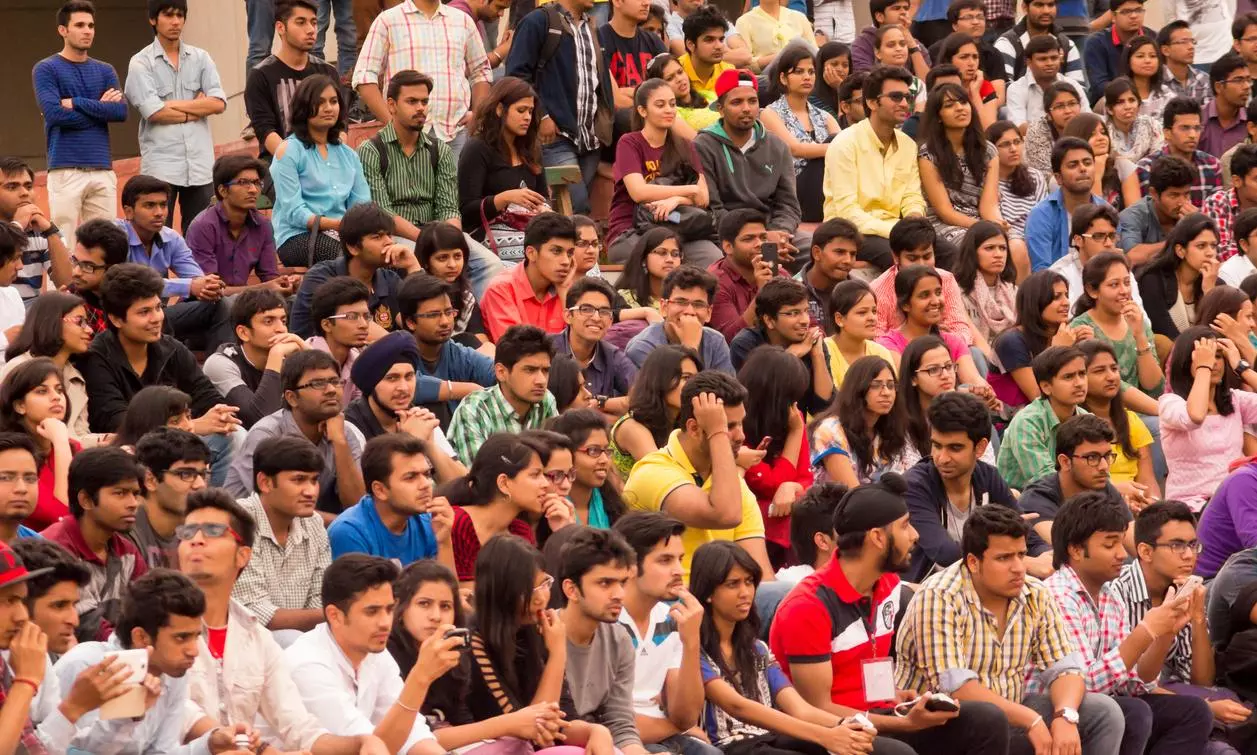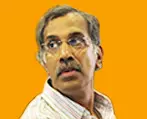
- Home
- India
- World
- Premium
- THE FEDERAL SPECIAL
- Analysis
- States
- Perspective
- Videos
- Sports
- Education
- Entertainment
- Elections
- Features
- Health
- Business
- Series
- In memoriam: Sheikh Mujibur Rahman
- Bishnoi's Men
- NEET TANGLE
- Economy Series
- Earth Day
- Kashmir’s Frozen Turbulence
- India@75
- The legend of Ramjanmabhoomi
- Liberalisation@30
- How to tame a dragon
- Celebrating biodiversity
- Farm Matters
- 50 days of solitude
- Bringing Migrants Home
- Budget 2020
- Jharkhand Votes
- The Federal Investigates
- The Federal Impact
- Vanishing Sand
- Gandhi @ 150
- Andhra Today
- Field report
- Operation Gulmarg
- Pandemic @1 Mn in India
- The Federal Year-End
- The Zero Year
- Science
- Brand studio
- Newsletter
- Elections 2024
- Events
- Home
- IndiaIndia
- World
- Analysis
- StatesStates
- PerspectivePerspective
- VideosVideos
- Sports
- Education
- Entertainment
- ElectionsElections
- Features
- Health
- BusinessBusiness
- Premium
- Loading...
Premium - Events

While South is concerned it will lose demographic dividend, central funds and Parliament seats due to its falling fertility rate, parts of North are still battling high population growth
The southern state of Andhra Pradesh has made a bold decision to abolish the two-child norm as a criterion for contesting local body polls.
This move runs counter to the trend in northern states, where there are calls to impose a two-child norm to curb population growth.
Delimitation freeze
The southern states are facing a unique challenge. As the delimitation freeze comes to an end in 2026, they fear that their representation in Parliament could be reduced.
Moreover, they worry that their share of central funds could decline, as these allocations are tied to population numbers.
The southern states feel that they are being "punished" for their effective population management as two moves — delimitation exercise and the terms of reference of Finance Commissions — could lead to a reduction in their share of central funds and seats in Parliament.
Andhra Pradesh is not alone in its concerns. The other southern states of Telangana, Tamil Nadu, Karnataka and Kerala are also grappling with demographic changes.
Rapid changes
The southern states have lower fertility rates compared to their northern counterparts, with Andhra Pradesh having an average TFR (total fertility rate, or births per woman) of 1.5, lower than the national average of 2.
A fall in the ‘productive population’ could adversely contribute to the economic growth of the state.
The demography of these states is also changing rapidly. The percentage of people above 60 years of age is increasing, with Andhra Pradesh already having an 11 per cent elderly population, which is expected to rise to 19 per cent by 2047.
At present, the national average of elderly among the total population is 10 per cent and it may rise to 15 per cent by 2047.
Productive workforce
At present, India is the most populous country in the world with an estimated headcount of 1.44 billion. It is advantage India because its population is among the youngest in an aging world.
Economists define the availability of a ‘productive workforce’ for a nation as its 'demographic dividend', where the share of the working-age population (15-64 years) is higher than the non-working age group.
In 2022, India’s median age was 28 years as opposed to 37 in China and United States, 45 in Western Europe and 49 in Japan.
However, this demographic dividend may not last forever, as the working-age population is expected to dwindle by 2040.
Northern states like Bihar and Uttar Pradesh have a lower median age than the South. By 2036, when the median age of Bihar is estimated at 28, in the South it is likely to be around 40.
Non-uniform changes
The demographic changes in India are not uniform, with Kerala aging faster than other states, while Bihar will peak only in 2051. By 2031, at least 11 of the larger 22 states, including Kerala, are likely to age faster than others.
The decline in birth rates is another factor contributing to demographic changes. India's fertility rate has nearly halved since the 1980s, with the current TFR standing at 2.
According to the National Family Health Survey - 5 (NFHS-5, 2019-21), India's fertility rate is lower than the replacement rate of 2.1. A positive fallout for the moment is the increasing working age population.
However, averages can be misleading. The phenomenon is not uniform across India, with seven states having high TFRs: Bihar (3.6), MP (3.1), Rajasthan (3.0), Jharkhand (2.9), Chhattisgarh (2.7), and Assam (2.4). The wide inter-state variations mean that the demographic dividend is available for different states at different points of time.
Communal issue
The poor have higher growth rates compared to educated and better-off individuals, with Bihar being "multi-dimensionally" poor and comparable to some sub-Saharan countries. Politicians, rather than focusing on health and education, are trying to convert this issue into a communal one.
BJP and right-wing politicians have been making irresponsible statements targeting Muslims, but in reality, the population growth rate of the Muslim community has been falling much faster.
According to former Chief Election Commissioner SY Qureshi, while the growth rate of Hindus fell from 19.2 per cent to 16.76 per cent in the 2001-11 decade, that of Muslims in the same period fell from 29.42 per cent to 14.6 per cent.
Politicians should focus on issues such as health and education. Regrettably, Assam Chief Minister Himanta Biswa Sarma has asked Muslims to control their population, saying “poverty can never be reduced” unless this is done.
Former Member of Parliament from Bhopal, Sadhvi Pragya, had earlier recommended two-child norm across India saying “Bangladeshis and Rohingyas” are “intruders” and a burden on India’s scarce resources. In reality, Bangladesh enjoys a better profile than India as their TFR is 1.98.
Social awareness
The southern states have been successful in managing the size of a family by creating social awareness rather than deploying coercive measures.
They focused on reproductive health, educating the masses on contraceptive measures and personal hygiene. Studies indicate that the imposition of two-child norms and denial of state sponsored social benefits to violators have often not met with success. On the contrary, it ended up hurting women.
The political class in the northern states should focus on policies that improve health and education rather than raising false bogies about "Hindu khatre mein hai" ("Hindus are in danger").
Unless this is done, the desire of converting India from a developing nation to a developed nation will remain a distant dream.


